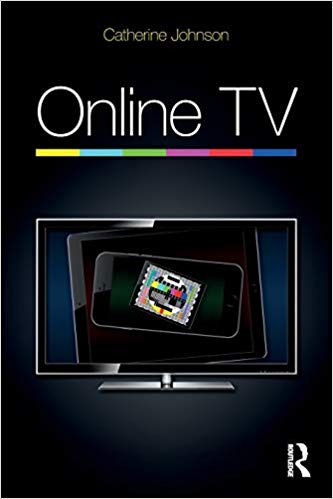Books: Online TV
March 30, 2020 · 0 comments
By Jonathan Clements.
 This is the water that you are swimming in. In the last few years, the nature of television has undergone a drastic transformation, the implications of which is still playing out in all sorts of aspects of modern life. Are you still talking about the latest episode of your favourite show at the “water-cooler” (or whatever passes for it at your workplace)? Or, as is increasingly the case, are half your friends wittering about The Mandalorian, while you still think it’s a new holiday resort near Goa?
This is the water that you are swimming in. In the last few years, the nature of television has undergone a drastic transformation, the implications of which is still playing out in all sorts of aspects of modern life. Are you still talking about the latest episode of your favourite show at the “water-cooler” (or whatever passes for it at your workplace)? Or, as is increasingly the case, are half your friends wittering about The Mandalorian, while you still think it’s a new holiday resort near Goa?
Gone are the days, within human memory, when there were a mere four channels, and everybody found out what was on by looking in the Radio Times. Instead, pick any five of your friends, and the chances are high that you are all living in a different “Now”, depending on the technology and services you have paid for. Catherine Johnson’s book, Online TV, aims to describe this new media environment, not merely in terms of the way it affects you, but in the way it affects the people who make the programmes.
 Online TV has been with us, in some form or another, since at least 2005, when Channel 4 began offering its 4OD service, and has developed out of a critical convergence of internet access, storage sizes and organisations willing to dip their toes into a new broadcast paradigm. Johnson cites Ofcom, which in 2015 was prepared to declare that online TV was no longer a privileged toy, but a true mass-market phenomenon.
Online TV has been with us, in some form or another, since at least 2005, when Channel 4 began offering its 4OD service, and has developed out of a critical convergence of internet access, storage sizes and organisations willing to dip their toes into a new broadcast paradigm. Johnson cites Ofcom, which in 2015 was prepared to declare that online TV was no longer a privileged toy, but a true mass-market phenomenon.
This sets Johnson off on the thankless task of defining exactly what Online TV is, and how it works. This takes a huge part of the book, but is sure to be one of its greatest values to young media students, as they struggle to avoid comparing apples and oranges. Because there is a difference between video on demand, and video on demand paid for by subscription, and video on demand paid for by advertising, and honestly, a lot of people don’t have to think about them all that often unless they have to wade through the clauses on an anime contract for a living.
Johnson suggests regarding media in terms of three areas of investigation – content, services and frames. The first one should be self-explanatory, although there are all sorts of fun implications about how that content is paid for. These affect economics further along the chain of access, such as, for example, the nature of a preview medium influencing the number of people who have even heard of a show that they might want to buy on DVD. I am mindful, here, of Mad Men, which never had a particularly large viewership, but managed to get mentioned at every awards-ceremony and at least once weekly in the Guardian, even if it was merely a pathetic excuse to print another picture of Christina Hendricks.
Johnson also deals with the effect of the way that content is dished out – is it dumped in one single binge-worthy lump, thereby risking the possibility that your spoddy friend watches the whole thing in a single night, while the young parents next door end up experiencing it in five-minute chunks over the next year?
Services, too, are an interesting element of online TV, since it can be everything from a YouTube video you happen to see on your computer, to a “quadruple” package from a service provider that also throws in the internet you watch it on, your mobile phone, your telly and the increasingly outmoded landline that sits in the corner.
Johnson’s most original contribution is her insistence on the importance of the “framing”, which is to say the way that online TV organises its content. She looks at the most common interfaces, and the way in which they both conceal the finite nature of the material, but also push it at the viewer. My most surreal experience of this came from the earnest robo-message that advised me that if I had enjoyed the life of Chairman Mao, I might also like to try Lemony Snicket’s Series of Unfortunate Events. This inevitably brings her to consider the algorithms that conspire to unite viewers with programmes they might like, not only in terms of what the channel owns, but also in terms of what it might go into production on. There are some interesting applications here of missteps in the history of services, such as the time that tinkering with “objectional” content made all the gay and lesbian programming disappear from Amazon.
At a time when so many people find themselves locked indoors, with only online TV for company, Johnson’s book offers a useful set of ideas for defining how we use it, think about it, and describe it.
Jonathan Clements is the author of Anime: A History. Online TV by Catherine Johnson is published by Routledge.
Leave a Reply